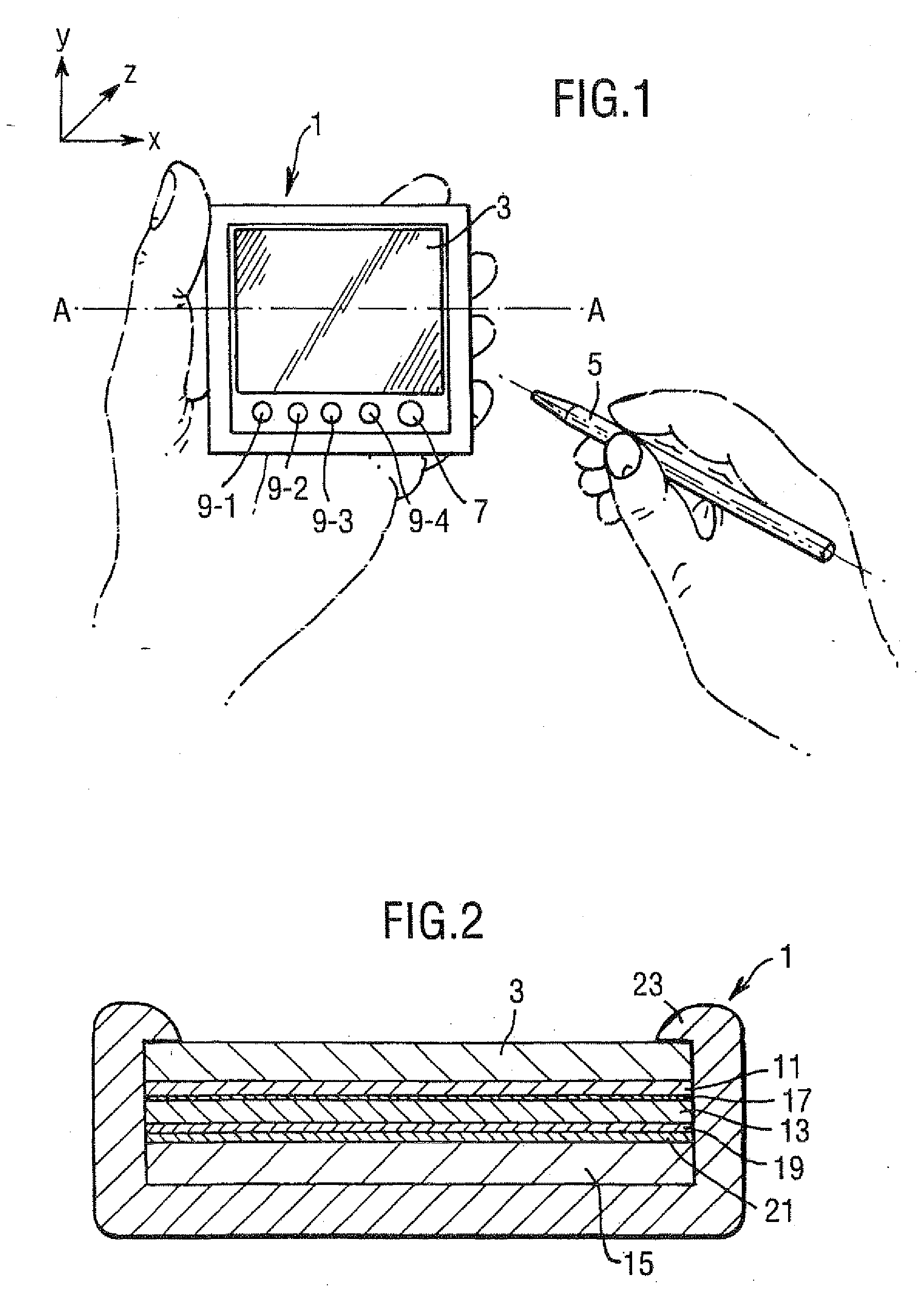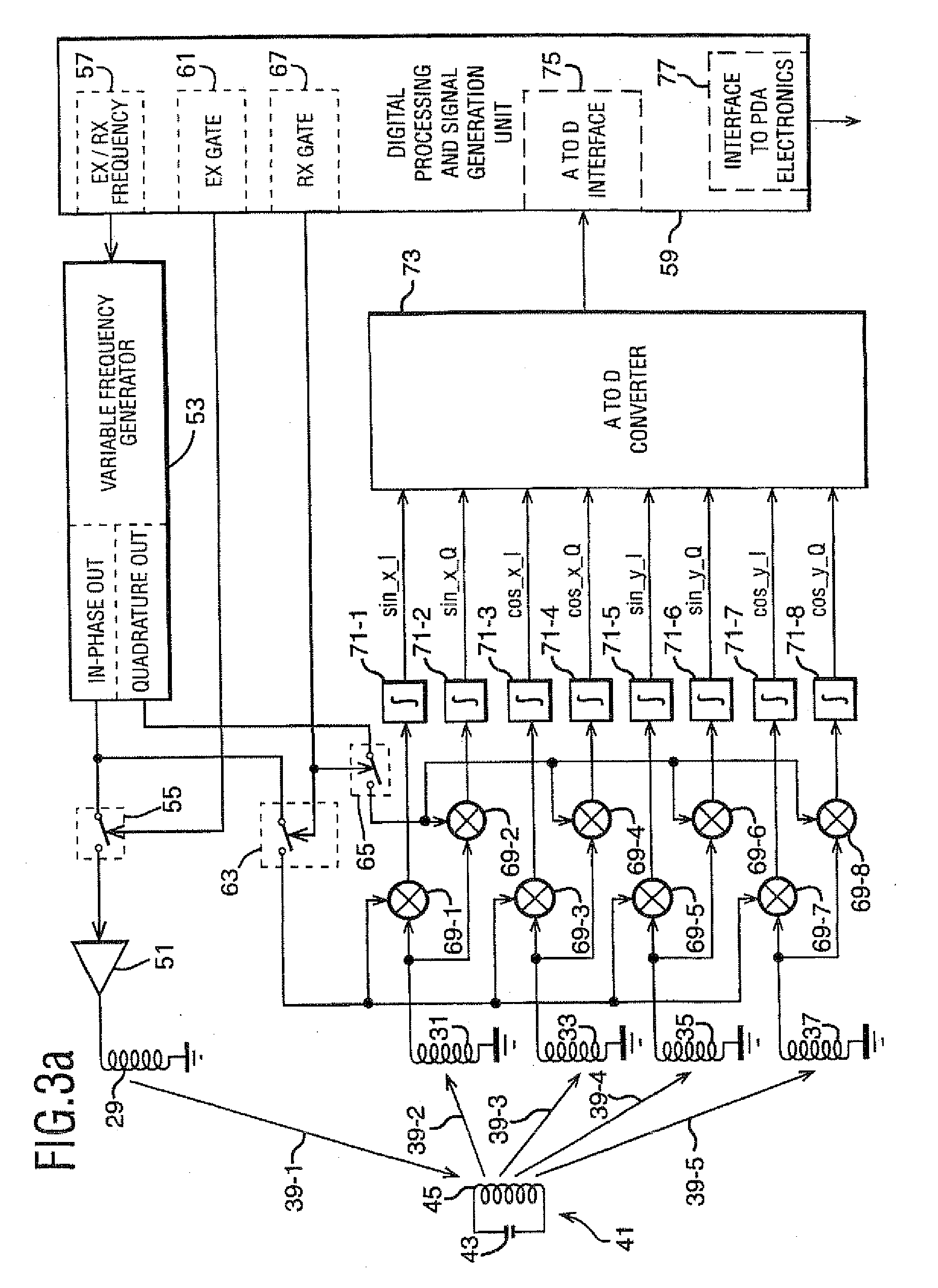Position sensor
a technology of resonant frequency and stylus, which is applied in the direction of instruments, cathode-ray tube indicators, power supplies for data processing, etc., can solve the problems of insufficient single measurement of the resonant frequency of the stylus to determine whether it is clicked or unclicked, requires user cooperation, and difficult prediction, etc., to achieve the effect of small nib-click distan
- Summary
- Abstract
- Description
- Claims
- Application Information
AI Technical Summary
Benefits of technology
Problems solved by technology
Method used
Image
Examples
Embodiment Construction
Overview of Digitizing System
[0050]FIG. 1 shows a hand-held battery-powered personal digital assistant (PDA) 1 which employs an x-y digitizing system (not shown) which is located beneath a liquid crystal display 3 of the PDA 1. The x-y digitizing system is operable to detect the presence and x-y position of a resonant stylus 5 relative to the LCD 3. The position signals output from the digitizing system are used by the PDA 1 to control information that is displayed on the LCD 3 and to control the operating function of the PDA 1. As shown, the PDA 1 also includes a number of push buttons beneath the LCD 3, including an on-off button 7 and a number of control buttons 9-1 to 9-4 which are used to control different functions of the PDA 1.
[0051]FIG. 2 shows a cross-sectional view on A-A of the PDA 1 shown in FIG. 1. As shown, the PDA 1 includes a liquid crystal display 3 which, in this embodiment, is between 1.5 mm and 3 mm thick. Beneath the LCD 3, there is an electroluminescent backlig...
PUM
 Login to View More
Login to View More Abstract
Description
Claims
Application Information
 Login to View More
Login to View More - R&D
- Intellectual Property
- Life Sciences
- Materials
- Tech Scout
- Unparalleled Data Quality
- Higher Quality Content
- 60% Fewer Hallucinations
Browse by: Latest US Patents, China's latest patents, Technical Efficacy Thesaurus, Application Domain, Technology Topic, Popular Technical Reports.
© 2025 PatSnap. All rights reserved.Legal|Privacy policy|Modern Slavery Act Transparency Statement|Sitemap|About US| Contact US: help@patsnap.com



